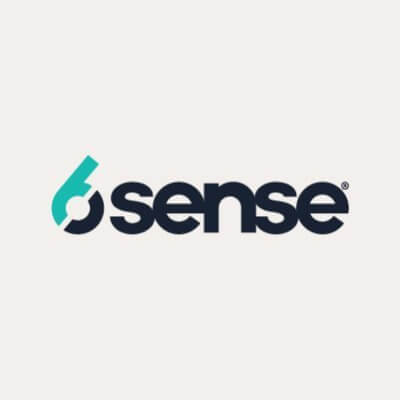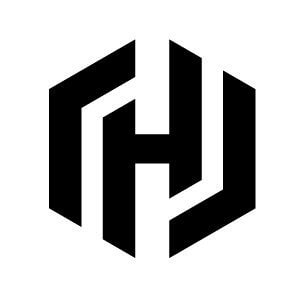Top 10 Essential Features for a Competitive Laundry Delivery App
Discover the top 10 essential features every competitive laundry delivery app must have. From scheduling and real-time tracking to payment integration and AI optimization, this guide is perfect for businesses and laundry app development companies aiming to build high-performing, white-label laundry mobile apps in 2025.

As a laundry app development company, understanding what makes a laundry mobile app stand out is crucial. Whether you're offering laundry delivery app development services or looking into laundry mobile app development, your platform's success hinges on essential features that serve both users and admins. These functionalities ensure seamless operations, client satisfaction, scalability, and brand reputation.
1. Intuitive User Interface & Onboarding (UI/UX)
Why it matters: First impressions matter. A clothes delivery app must be easy to navigate for both new users and laundry drivers.
-
Quick, intuitive onboarding: minimal fields, optional social logins.
-
Personalized dashboard: offers order status, loyalty rewards, history.
-
Visual clarity: clear buttons, icons, and process steps (e.g. P&D stages).
-
Accessibility features: font sizes, color contrast, multilingual support.
An effective UI/UX retains customers, reduces support queries, and boosts conversion.
2. Pickup & Delivery Scheduling System
Key to laundry delivery app development: an automated schedule system that meets the varied needs of users.
-
Real-time calendar view: daily slots, recurring pickups available.
-
Same-day/Express options: chargeable premium services.
-
Reschedule feature: flexible managing by users and admins.
-
Route-aware time slots: realistic, driver-friendly options.
This smart scheduling feature reduces failed pickups and increases user trust.
3. Order Tracking & Real-Time Notifications
Transparency builds confidence in laundry app development:
-
Order Status Flow: e.g. “Scheduled”, “Picked Up”, “Processing”, “Out for Delivery”, “Complete”.
-
GPS-enabled tracking: live route view like ride-sharing apps.
-
Push notifications: SMS/email/push alerts for each status change.
-
Driver ETA & live chat support.
Users remain engaged and informed at every stage, elevating the mobile experience.
4. Comprehensive Service Catalog & Pricing
Your laundry mobile app development needs a clear, itemized service list:
-
Service categories: wash & fold, dry clean, ironing, express, eco-wash.
-
Garment-level customization: allow for delicates, special instructions.
-
Transparent pricing: display charges before checkout.
-
Add-ons: stain treatment, fabric softener, allergy-free detergent.
A clear service menu boosts user confidence and minimizes checkout friction.
5. Integration of Multiple Payment Methods
A strong payment feature is essential for any laundry delivery app development project:
-
Digital wallets: Apple Pay, Google Pay, PayPal, Razorpay.
-
Credit/debit card processing: PCI-DSS compliant.
-
Cash-on-delivery option: popular in some regions.
-
In-app wallet: store credits, earn loyalty points.
-
Discount mechanisms: coupons and promo codes.
Varied payment options cater to more users and improve convenience.
6. Ratings, Reviews & Feedback System
Reputation is everything. Reviews keep quality in check:
-
Post-delivery ratings: 1–5 stars and written feedback.
-
Review visibility: users browse past feedback before ordering.
-
Driver/service ratings: ensure accountability.
-
In-app support portal: messages & FAQs for complaints or issues.
Feedback loops foster trust, inform improvements, and reduce churn.
7. Loyalty & Referral Programs
Retention is cheaper than acquisition, and built-in rewards help:
-
Point accrual on orders/spending.
-
Tier-based rewards: bronze, silver, gold memberships.
-
Referral bonuses: credit for inviting new users via shareable links.
-
Personalized offers: celebrate birthdays or regular-order discounts.
A strong loyalty program encourages long-term engagement and brand advocacy.
8. Driver & Staff App with Routing Tools
A laundry mobile app isn’t just for customers. Behind the scenes:
-
Dedicated driver app: with jobs, pickup/delivery addresses, and optimized routes.
-
Driver login & profile: ratings, availability, and performance metrics.
-
Route optimization: auto-routing for efficient delivery rounds.
-
In-app messaging: seamless communication with support.
A robust driver component minimizes delays and enhances accountability.
9. Admin Dashboard & Analytics
No laundry delivery app is complete without powerful administrative control:
-
Order monitoring: overview of ongoing, pending, and completed orders.
-
Driver & Staff Management: schedules, ratings, commissions.
-
User Management: profiles, order history, wallet balance.
-
Revenue Reports: daily to historical revenue graphs, scaled by mode, location, and service.
-
Geolocation heatmaps: identify high-demand zones or service gaps.
-
Discount and promo tools: set coupons, time-based deals, or loyalty specials.
-
Customer support module: handle tickets and chat directly from a dashboard.
This admin-side detail ensures the app runs efficiently and scales well.
10. White-Label & Customization Ready Architecture
For most laundry app development companies, offering white-label solutions is key:
-
Brandable UI: logo, colors, fonts, localized text per vendor/region.
-
Feature toggles: enable/disable modules based on client needs.
-
Multi-tenant setup: handle multiple laundry businesses under one platform.
-
API-first design: smooth integration with third-party systems like ERP, CRM.
-
Modular design: install modules like AI routing, subscription billing, or loyalty independently.
White-label readiness ensures flexibility and a quicker go-to-market for many businesses.
11. Optional: AI-Based Optimization & Smarter Features
Competitive laundry delivery app development must evolve with tech:
-
Smart Routing: AI-powered driver paths reduce time and cost.
-
Demand Forecasting: auto-suggest extra drivers during peak times.
-
Personalized Notifications: up-sell services based on user behavior.
-
Dynamic Pricing: prime-time charges to better match demand and capacity.
AI delivers efficiency and intelligent decision-making to your application—exactly what users and businesses seek.
12. Security, Compliance & Data Protection
A laundry mobile app development company can’t overlook security:
-
Secure authentication: JWT, OAuth2, 2FA, password hashing.
-
Data encryption: at rest (AES-256) and in transit (SSL/TLS).
-
Payment security: PCI-DSS for card payments.
-
Regulatory compliance: GDPR, CCPA depending on region.
-
Data retention policies: user account and order history cleanup.
-
Privacy settings: users control personal data, notifications, and ads.
Security and legal compliance boost customer trust and reduce liability risks.
13. User & App Performance Needs
Speed, scalability, and reliability are non-negotiable.
-
Fast load times: optimized images, lazy loading, minimal startup.
-
Scalable server architecture: containerized microservices (Docker, Kubernetes).
-
Push notifications: event-based triggers, delivery reliability.
-
Crash reporting: integrated logging (Sentry, Logstash, etc.).
-
Offline behavior: cached scheduling or order drafts offline.
High performance keeps users engaged and reduces friction-related app abandonment.
14. Tech Stack Recommendations
A solid tech framework backs feature implementation:
-
Frontend Mobile: Flutter or React Native (iOS and Android cross-platform).
-
Backend: Node.js + Express, Laravel, or Django REST.
-
Database: PostgreSQL for transactional data, MongoDB for documents.
-
Real-time messaging: Firebase or Socket.io.
-
Maps & routing: Google Maps, Mapbox.
-
Payments: Stripe, PayPal, Razorpay.
-
Notifications: Firebase Cloud Messaging.
-
CI/CD: automated testing with Jenkins or GitHub Actions.
-
Analytics: Mixpanel or Google Analytics for insights.
15. Launch Strategy & Scaling Tips
Post-development steps keep the app competitive:
-
Beta Testing: launch small pilot groups to collect feedback.
-
Marketing Campaigns: promote via social media, referral bonuses.
-
Geographical Rollout: start one city, expand based on demand analytics.
-
Partnerships: tie-ins with apartment complexes, co-living, or local businesses.
-
Continuous Upgrades: add AI, loyalty enhancements, new services.
-
Support Setup: offer chat support, driver helplines, FAQ pages within the app.
Conclusion
Delivering successful laundry delivery app development hinges on the right mix of features. A top-tier app integrates user convenience, clear communication, driver efficiency, and backend intelligence—all wrapped with security and scalable architecture.
Whether looking for a white-label laundry app or a custom build, this feature list can guide laundry app development companies and clients aiming to launch a standout laundry delivery solution. Focus on experience, reliability, and innovation—and your app will thrive in a competitive, mobile-first market.





































































![https //g.co/recover for help [1-866-719-1006]](https://newsquo.com/uploads/images/202506/image_430x256_684949454da3e.jpg)
























![How Smart PMs Scale Their Careers in Any Org [TPG Live Recap]](https://tpgblog.com/wp-content/uploads/2025/06/2025-06-12-thumbnail-action.png?#)



















































